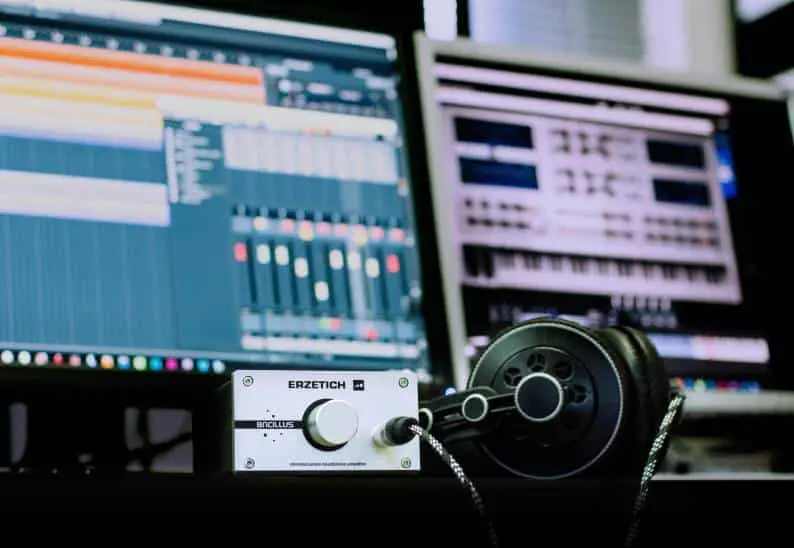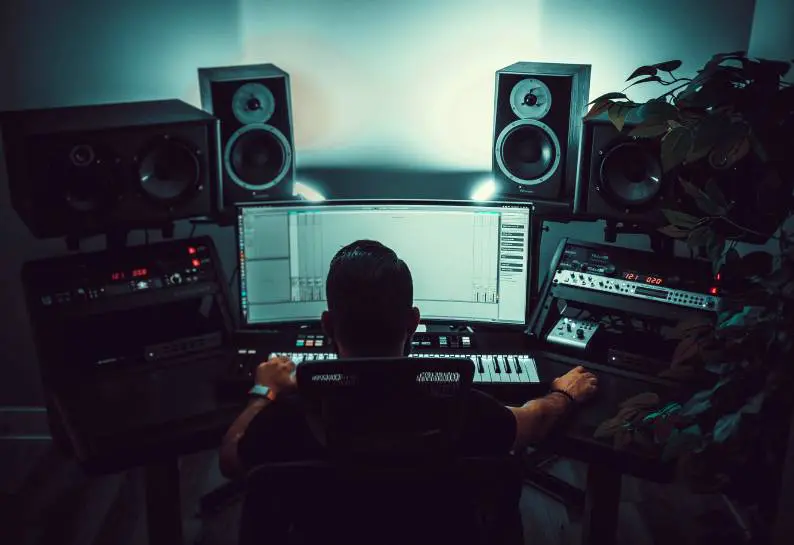A computer running music production software in a studio. / Pexels
Are you looking for a sleek and innovative music production platform? If so, FL Studio is your key to success!
Artists frequently create hit songs with this software. It’s beautifully designed, with an intuitive workflow and minimal distractions to help you perform at the highest level.
However, like with any digital audio workstation, it’s hard to master without tutorials. It’s also not easy to know which edition to get: some will find everything they need in the entry-level package, while others upgrade to options like the FL Studio Producer Edition.
This article talks about every aspect of FL Studio, from what beginners need to know to get started to advanced techniques for professionals and how to overcome common issues. With this guide, you’ll be ready to succeed!
Getting Started with FL Studio
To get started, you must pick the right edition. There are four:
- Fruity
- Producer
- Signature
- All Plugins
The versions vary in FL Studio price and features. For example, the FL Studio Producer Edition has more sound effects than Fruity. Once you find the right one, you can start making music!
Basic Features of FL Studio
The software has six main windows:
- Toolbar
- Channel Rack
- Mixer
- Browser
- Playlist
- Piano Roll
Every digital audio workstation’s windows function differently, and FL Studio is no exception. Suppose you’re a beginner or a professional who has never used the software. In that case, using Sonic Academy to familiarise yourself with the basic features is a good idea.
Making Your First Beat
You have the program, and you’ve learned about the basic features. Now, you can start making your first beat!
1. Create a New Project
Open FL Studio and press File > New from template > Minimal > Basic. This will create a new project with a beginner-friendly layout.
2. Add Channels
Click the + symbol on the channel rack window. This will add channels to which you can add instruments.
3. Make a Beat
Third, you can create a beat using drums! Under packs, you’ll find a heading for drums. When you find the sound you want, drag it into the channels.
From here, right-click a drum’s name and open the piano roll window from the drop-down menu that appears. Now, you can find the right pitch. You can also drag the notes to lengthen or shorten them.
Mixing and Mastering
Mixing is the process of arranging and blending individual tracks. It involves changing the placement and volume of tracks so the song sounds cohesive.
Mastering is the last step of music production. It involves polishing everything and finishing the project.
Mixing and mastering are two of the most critical steps of making music, and FL Studio provides the tools necessary to make it an efficient and enjoyable process. They take practice, so don’t be discouraged if something doesn’t come out like you expected!
A producer works hard on a song. / Unsplash
Advanced Techniques
Some advanced techniques that FL Studio offers include:
- Gain controls
- Automated cross-fade
- VFX sequencer
- LuxeVERB
- Saturation
- Dynamics
These take time to master, so keep creating until you’re ready to take your production to the next level with these techniques!
Troubleshooting Common Problems
FL Studio users often face these two issues:
1. The Software Won’t Open
If FL Studio doesn’t open, try restarting your computer. A common problem arises from antivirus software: if you use a program like this, deactivate it or whitelist FL Studio. If all of this fails, delete the software and reinstall it.
2. The Audio is Lagging and Glitching
Most often, the cause of lagging and glitching audio is an overloaded CPU. Your computer’s CPU can only handle so many tasks simultaneously, and FL Studio can be demanding. If your computer is overly hot, the fans are loud, or your CPU use percentage is high, your computer may not have the specs required to run the software.
Building Your Skills Over Time
Music production, like most creative endeavors, takes time and practice! The best way to improve at creating beats is to keep doing it.
A great tip professionals swear by is always to finish songs, even if they seem low quality. If you never complete anything, you won’t develop the skills required to polish a project!
In Conclusion
FL Studio is a powerful tool that opens many doors in music production. All you have to do is pick the correct software version and FL Studio price for you, and you will be on your way to creating exceptional music. Don’t be afraid to dive right in and start practising making beats!






